Colonial Williamsburg hired its first two full-time interpreters for Native American programming this year as part of the ongoing effort to capture colonial life in all its complexity. You may run into Robert Mush talking about news of the day at Charlton’s Coffeehouse, or join a Cherokee translator or trader in town on business.
Special programs, such as the Return of the Cherokee week and the upcoming Beloved Women of Chota, feature additional guest actors.
But in general, our understanding of how the indigenous peoples of revolutionary America participated in Virginia society or the American Revolution lags far behind what we know about European immigrants or even enslaved African Americans.
If you’re like me, you want to know more.
So with that in mind, I spoke with Buck Woodard, Manager of the American Indian Initiative at Colonial Williamsburg, who has been instrumental in guiding Indian programming into a more prominent position.
I asked Buck for surprising facts worth knowing about 18th century Indians in Virginia. Here’s what he had to say.
#1 Kaskaskia Was Part of Virginia
Virginia started as a small outpost at Jamestown. It grew slowly, with Williamsburg becoming the capital in 1699. But as made evident by the Mitchell map of 1755, the colony’s territorial claims extended to the Mississippi River and up to the Great Lakes.
Why is this important? Because this meant that any of the tribes living in the territory that wanted to conduct trade, politics, or diplomacy with the richest and most populous British colony inevitably had dealings with the seat of power.
“Indians living in that territory might not agree that they were in Virginia,” says Buck, “but the British perspective is that they were. So if Indian groups in that territory wanted to deal with the capital, they had to come to Williamsburg.”
And that included people coming from Kaskaskia, located near what is now St. Louis.
#2 It’s More Than Paint and Feathers
When people think of “Virginia Indians,” they think of the Powhatan and Pocahontas of the early 17th century colonial encounter. But what Buck calls an Indian presentation of “paint and feathers” reflects the 18th-century Native peoples who lived farther away from colonial settlements.
In many instances tribal communities on the frontier retained more traditional cultural practices, even as they increased trade with Euro-Americans. Yet, the narrative of these more distant Indians’ pilgrimage to Williamsburg for trade, warfare, and alliance tells only part of the story.
By the late 18th century, the period of time interpreted at Colonial Williamsburg, many local Indian peoples were acculturated with Euro-American society.
The Native American story in Tidewater Virginia is not the same as those communities farther from Williamsburg, such as the Cherokee, Shawnee, Catawba, and Delaware.
Pamunkey stories, which are part of the newer interpretation in Williamsburg, show the diversity of Indian experience. “The Pamunkey dress like their white and black counterparts in colonial society, speak English, and they’re Christian,” says Buck. Robert the Shoemaker, for example, was a Pamunkey Indian.
#3 The Brafferton Indian School Was No Failure
The Indian School at the College of William & Mary started in the early 1700s with a mission to educate and Christianize Native American students. It was imagined that the students would become lay ministers and spread the Christian faith to their tribes on their return home.
But most didn’t, and for that reason many considered the school’s mission a failure. But not Buck.
“How much of a failure could it have been when it was educating students from 1700 to 1779?” asks Buck.
The role of the Brafferton changed during the mid-18th century, producing more interpreters and tribal liaisons than Christian ministers. But, some officials and observers lamented the lack of missionary work.
Some people talked about what a disappointment the Catawba student John Nettles was, for example. “He was said to be too fond of liquor or too fond of country dancing,” says Buck. In other words, he seemed to have taken on the trappings of the lower class.
One person wrote that Nettles appeared to have lost his education when he later saw him at Indian Town. The British might have been unhappy that he didn’t evangelize or wear a powdered wig. For that matter, the Catawba might have complained that he wasn’t as good a hunter after going to the Brafferton.
But he was active translating, reading treaties, and acting as a cultural broker. Like others educated at Brafferton, he was literate. He just didn’t wear a powdered wig.
#4 An 18th-Century Forrest Gump
One of the Indian men you might meet in Williamsburg is Robert Mush, a Pamunkey who turned up all over the place during the Revolution.
Mush came to Williamsburg in 1769, attending school at the Brafferton and church at Bruton Parish. In 1776, he joined the fight on the Patriot side, signing up for the 15th Virginia regiment. He saw action at Germantown and Brandywine, and was held on a prison ship for almost two years after the British siege of Charleston.
He jumped right back into the war after his release, fighting at the Battle of Yorktown. He eventually became a minister, married a Catawba woman, and settled in South Carolina in the early 1800s.
#5 “Indian” or “Native American”?
It can be confusing figuring out the right term to use.
Well, both. And neither.
Ideally, you refer to a person by their tribal affiliation. In Virginia, that includes the Pamunkey, Chickahominy, and Nottoway, among others.
In Virginia, Indian is a commonly accepted term. It’s unusual to hear anyone within one of the tribes use the term Native American, says Buck, but west of the Mississippi, it’s common. In Canada some indigenous peoples are called First Nations, others Métis and Inuit. But individuals have their own preference, so Buck preaches tolerance for variation.
What’s most important, he says, is to talk to an Indian just like you would anyone else. Communicate and become familiar. “It’s the human experience that’s important,” says Buck.
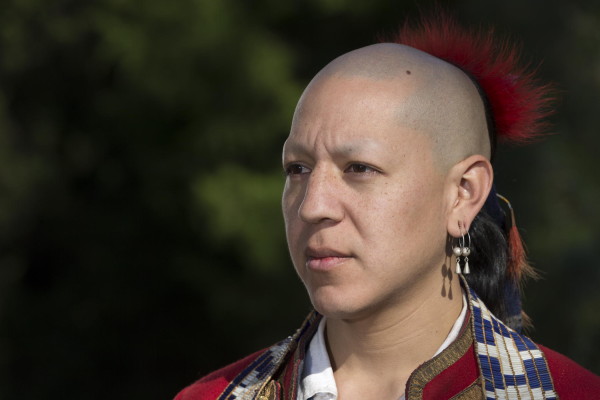
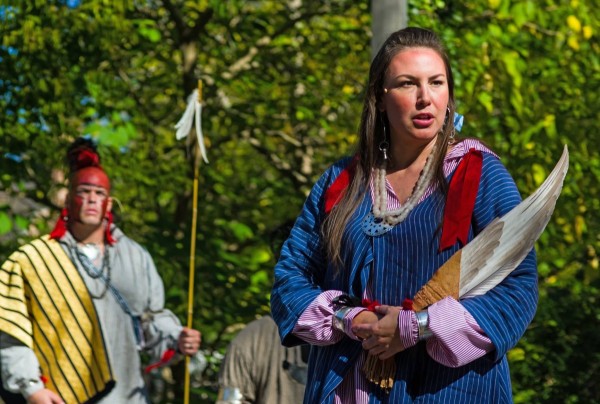
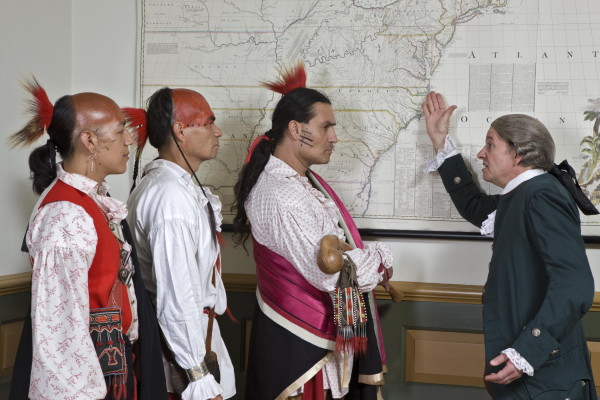

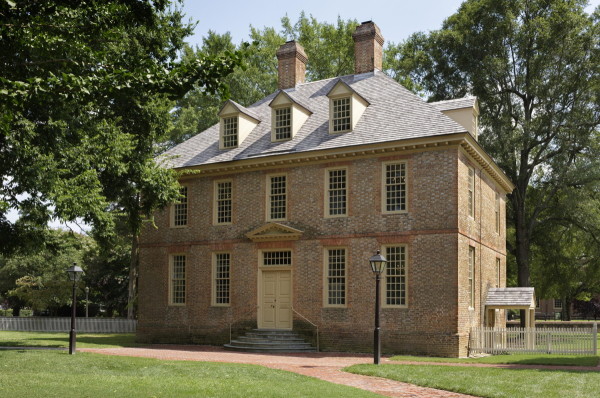

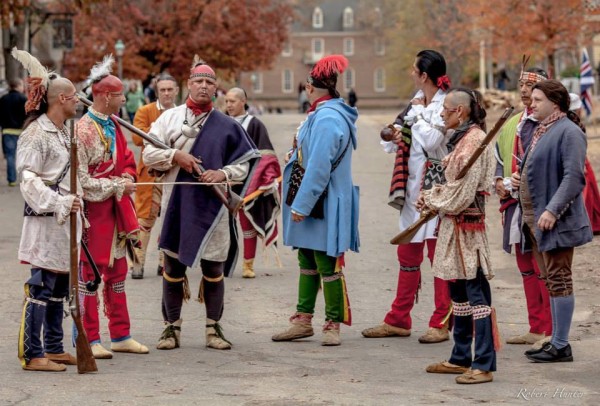

Ed Mauldin says
Your facts are wrong. Virginia Indians are not Cherokees, but Algonquians. The local Powhatan, Pamunkey, Mattaponi, and Chickahominy tribes were in an Algonquian confederacy.
Thanks for commenting. Let me clarify what we’re trying to say. The Cherokee occupied parts of southwestern Virginia in the 18th century and they came to Williamsburg to conduct trade and diplomacy. Even though they are not on the list of recognized Virginia Indian tribes today, they were important players in the colonial era.
scott thomas says
A fascinating article! Thank you!
scott thomas says
Fine article! Thank you!
Will Robertson says
Good article. However, I noticed the absence of the MattaPoNi. Any reason?
Absolutely not. This article only scratches a little bit of the surface, and my mentions of various groups was arbitrary because I knew I couldn’t list all of them. Thanks to Buck and other strong advocates, we’ve gotten a lot better at presenting Native American stories. But there’s much much more to be done, and we’ll try to present a good range of content that will serve everyone well. If there was a particular oversight in this case, it was inadvertent and it’s on me.
Interesting stuff, Bill. I’d never heard of Robert Mush. Look forward to meeting him at CW.
Mush is a fascinating figure that I hope to write more about soon. There’s also a short profile of him in Colonial Williamsburg’s new guidebook.